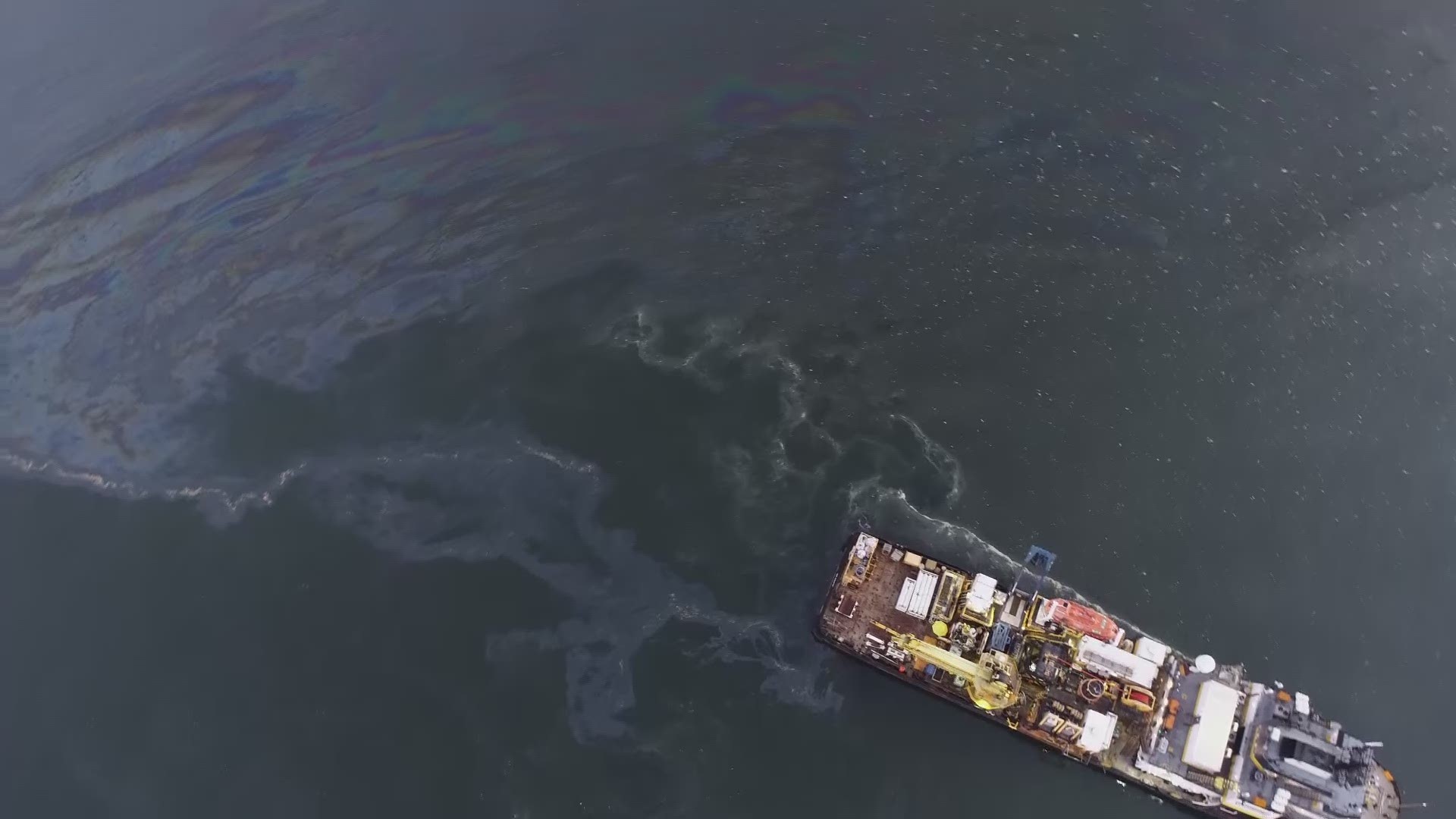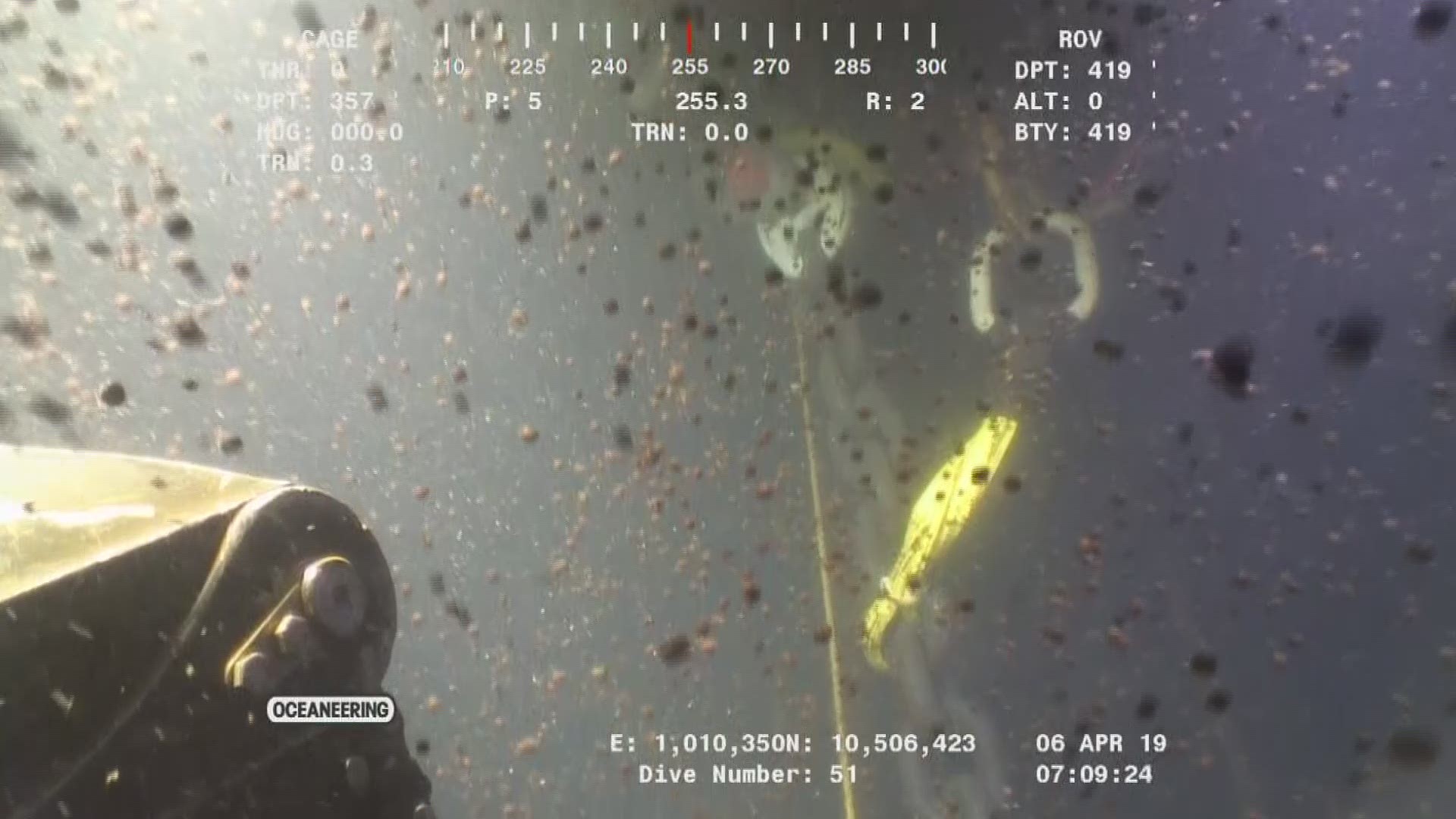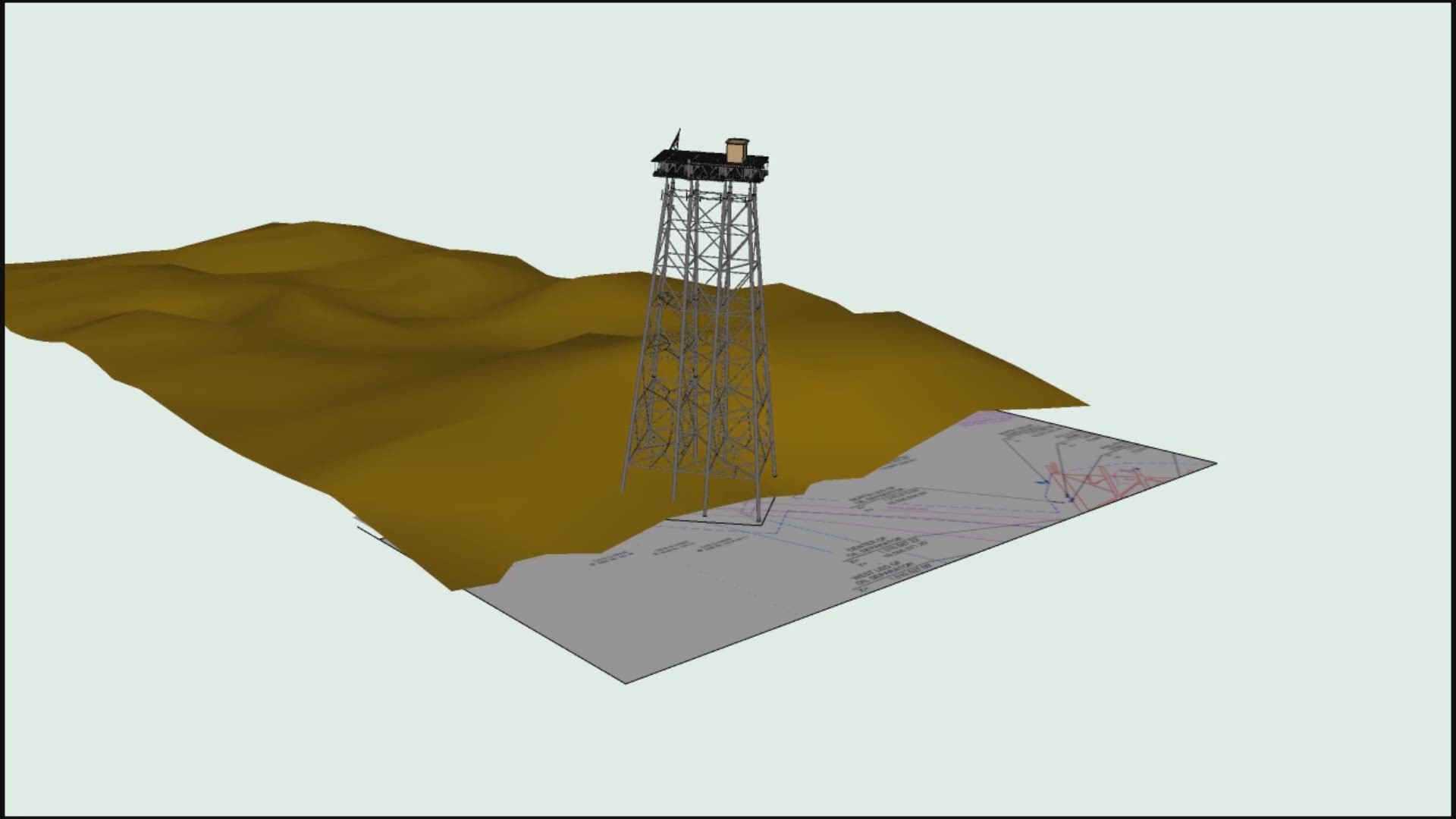Taylor Energy has filed a lawsuit challenging the Coast Guard’s order for the New Orleans oil company to halt a more than 15-year-long oil leak in the Gulf of Mexico.
Filed in federal court in New Orleans on Monday, the lawsuit asserts that Taylor is not liable for the costs, penalties or damages related to collecting or halting the oil flowing from the site of its broken deepwater wells. Taylor also questions whether the high volume of oil the Coast Guard says is being collected from Taylor’s wells is actually oil from its wells.
The lawsuit comes a few weeks after the Coast Guard billed Taylor $43 million for more than a year’s worth of oil collection and removal costs.
In 2004, Hurricane Ivan triggered an underwater mudslide that toppled Taylor’s Mississippi Canyon Block 20 oil platform, often referred to as MC20, which sat about 10 miles from the mouth of the Mississippi River. Taylor plugged and covered some of the broken wells, but large oily sheens have been visible on the water’s surface for more than a decade.
In 2018, the Coast Guard ordered Taylor to fix the problem after a government-commissioned study estimated the platform site was releasing between 10,500 and 29,000 gallons of oil per day. That volume was vastly larger than the dozen or so gallons per day estimated by scientists hired by Taylor.
When Taylor refused to take action, the Coast Guard hired the Couvillion Group, a Belle Chasse marine contractor, to do the job. Taylor sued Couvillion, arguing the contractor was unqualified and would likely cause larger releases of oil.
Couvillion started work anyway, installing in April 2019 a custom-built contraption that catches oil as it bubbles upwards. In one year, Couvillion recovered about 400,000 gallons of oil, according to Couvillion and the Coast Guard. That’s the equivalent of four oil spills the Coast Guard would define as environmental disasters of national significance.
The Coast Guard is reviewing Taylor's latest lawsuit and was not ready to comment on Tuesday.
A Taylor spokesman declined to discuss the lawsuit, saying it “speaks for itself.”
Taylor has long sought to downplay its responsibility for the continued leaks. Its lawsuit attacks the Coast Guard’s cleanup and containment efforts, which began in 2018, on several fronts. It questions the validity of the Coast Guard cleanup order, “exaggerated and excessive" costs associated with Couvillion’s work, and the Coast Guard’s alleged failure to show proof of the oil collected.
Perhaps the boldest assertion is that the oil Couvillion is collecting isn’t from Taylor wells.
“Any oil that has been collected at the MC20 Site by the Coast Guard and/or Couvillion is not oil sourced to the Taylor Energy wells at MC20,” the lawsuit says. The Coast Guard, Couvillion and several university and government scientists say the oil leaking from the Taylor site is, indeed, Taylor's.
Scientists hired by Taylor have said the oil leaving the site is not from subsurface wells and is instead from oil that seeped into the seafloor when the platform toppled. They say attempts to clean up oil embedded in sediment on the seafloor would likely release more oil than could be collected.
Taylor, which is no longer in the oil business, is trying to get back the remaining $430 million from a $666 million trust the company was required to create to pay for oil that escaped after the platform was destroyed. Taylor says it has done all it can at the site, and that the remaining funds should be returned.
The Coast Guard expects the trust to reimburse the $43 million spent so far on oil collection and removal. The trust would continue to be drawn down for continuing cleanup costs unless a permanent fix, which would also be expensive, is devised.
Taylor Energy was founded by Patrick Taylor, the late oilman who started and initially funded a merit-based college scholarship program for Louisianans that is now known as TOPS. He died a few weeks after the platform toppled, and all his company's oil leases and other oil and gas assets were sold four years later. The company, which has declined to say what assets remain, is led by Patrick Taylor's widow, Phyllis Taylor, a prominent philanthropist and political donor.
► Get breaking news from your neighborhood delivered directly to you by downloading the new FREE WWL-TV News app now in the IOS App Store or Google Play.



